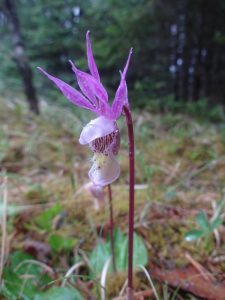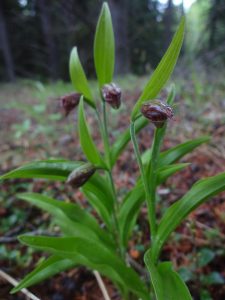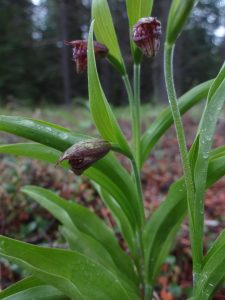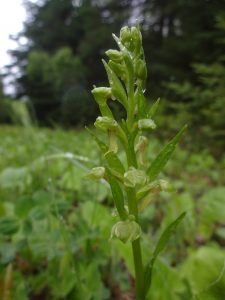Current events: Amateur Botanists Drop-in
Are you interested in identifying plants, learning from others with knowledge and experience or possibly sharing your knowledge and experience with others in an informal setting?
The herbarium will be open on Saturdays from 9 am to 11:30 am over the winter months starting 30 November 2019.
Interested persons are encouraged to drop in to learn and share – especially those interested in non-vascular mosses and lichens. You will have access to the herbarium specimens for study and comparison. If you have your own specimens bring them and receive help in how to identify them. Also available will be microscopes, internet resources and various keys/books. Micro- and macro- photography systems will also be available. Parking in Lot 5 on the west side of the Centennial Building is free on the weekends and there is no charge for use of the herbarium, it’s equipment and other resources. Note that there will be no professional over sight or verification of your identifications.
The regional vascular plant collection is being checked, barcoded and specimen sheets photographed, largely by volunteer helpers and student part time employees. As digitization of specific families of plants is completed, the images will be placed into these web pages for general use. We appreciate the help of the digital archivist of our Paterson library. Rare or endangered species may be omitted from the public site, but will be made available to legitimate research projects at recognized scientific institutions.
The remaining vascular plants acquired from regions outside of NW Ontario (primarily through exchanges by Claude Garton) are being entered into a separate database by volunteers.
Canada yew sub-project: The shrubby Taxus canadensis is one of the potential sources of the anti-cancer drug taxol. This drug (and derivatives) has been synthesized by chemists, but so far it has proven more cost effective to obtain the basic taxane chemical structure from living material. This has led to world-wide over-exploitation of the Taxus genus. Our boreal shrub is not in immediate danger of extirpation, but it has been collected in Quebec and Maritimes. Cell culture methods may replace the need to source the drug from nature. White tailed deer expansion into our geographical area represents greater threat, as the shrub is favourite winter browsw species, with often only the snow covered base of the shrub surviving. Again, we appreciate any submissions to iNaturalist of observations of this particular plant in NW Ontario.
The lichen collection of about 3000 packets was entered into an Excel spread sheet by several volunteers. However, we estimate that about 40% of the specimen have been re-classified or re-named since being deposited. The collection remains organized under original names, but currently recognized species names were included in a separate spreadsheet. This information has been shared with CANL and will be sent out on request. To introduce the general public and amateur naturalists to this inconspicuous group of organisms, we invite you to take a walk around our campus, guided by an app/website. Campus trees were also included in this guided tour, since many lichens grow on trees.
Lichen sub-project: Lobaria pulmonaria distribution as indicator of undisturbed habitats. This readily identifiable lichen seems to be one of the species which likes mature trees as substrate (often in unpolluted old growth forests), although we have found it on rock on several occasions. The program iNaturalist seems to be providing a good picture of the world-wide distribution of this organism in relatively pristine locations.
We are taking different approach with the Bryophyte collection, again with volunteer help. Through a generous financial gift of former curator, we will be in a position to hire a part time student. Samples of rare or less common species will be digitally photographed and submitted to iNaturalist under LKHDBRYO name. Samples will be occasionally shared with experts for re-examination and re-naming.
New specimen submissions:
Because of the limited herbarium resources, we would appreciate that contributors prepared the specimen, including mounting, labeling, entering into the database, barcoding the specimen and photographing each one for inclusion in the public database. Alternatively, contributors are encouraged to use iNaturalist or recruit additional volunteers willing to assist with the submission process. Detailed protocols and training will be made available by the herbarium staff.




